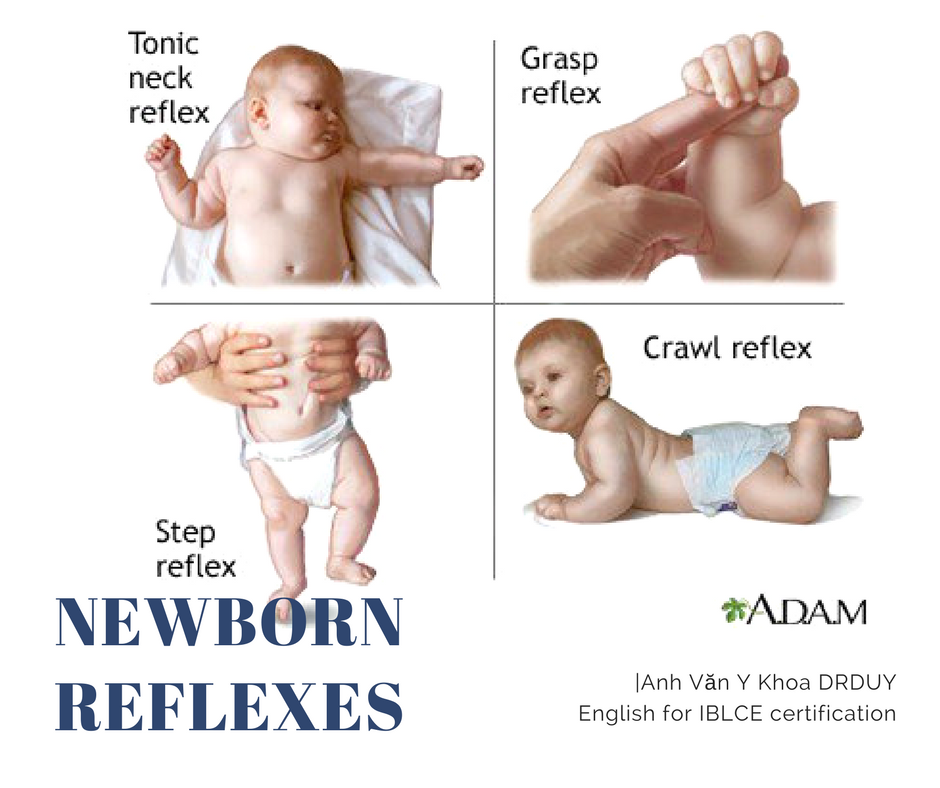
Newborn REFLEXES
Reflexes are involuntary movements or actions. Some movements are spontaneous, occurring as part of the baby’s usual activity. Others are responses to certain actions. Reflexes help identify normal brain and nerve activity. Some reflexes occur only in specific periods of development.
The following are some of the normal reflexes seen in newborn babies:
- Root reflex. This reflex begins when the corner of the baby’s mouth is stroked or touched. The baby will turn his or her head and open his or her mouth to follow and “root” in the direction of the stroking. This helps the baby find the breast or bottle to begin feeding.
- Suck reflex. Rooting helps the baby become ready to suck. When the roof of the baby’s mouth is touched, the baby will begin to suck. This reflex does not begin until about the 32nd week of pregnancy and is not fully developed until about 36 weeks. Premature babies may have a weak or immature sucking ability because of this. Babies also have a hand-to-mouth reflex that goes with rooting and sucking and may suck on fingers or hands.
- Moro reflex. The Moro reflex is often called a startle reflex because it usually occurs when a baby is startled by a loud sound or movement. In response to the sound, the baby throws back his or her head, extends out the arms and legs, cries, then pulls the arms and legs back in. A baby’s own cry can startle him or her and trigger this reflex. This reflex lasts about 5 to 6 months.
- Tonic neck reflex. When a baby’s head is turned to one side, the arm on that side stretches out and the opposite arm bends up at the elbow. This is often called the “fencing” position. The tonic neck reflex lasts about 6 to 7 months.
- Grasp reflex. Stroking the palm of a baby’s hand causes the baby to close his or her fingers in a grasp. The grasp reflex lasts until about 5 to 6 months of age.
- Babinski reflex. When the sole of the foot is firmly stroked, the big toe bends back toward the top of the foot and the other toes fan out. This is a normal reflex up to about 2 years of age.
- Step reflex. This reflex is also called the walking or dance reflex because a baby appears to take steps or dance when held upright with his or her feet touching a solid surface.
Next Reading
- SLEEP PATTERNS
- SENSES
- CRYING
Xem thêm phần 2:
English for IBLCE Preparation 7: Normal Newborn Behaviors and Activities P2
Để lại một phản hồi Hủy